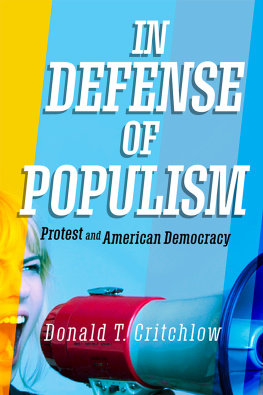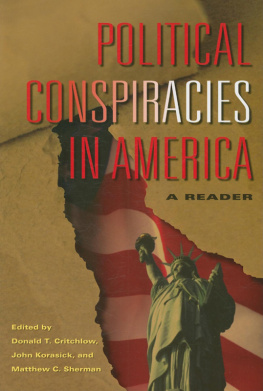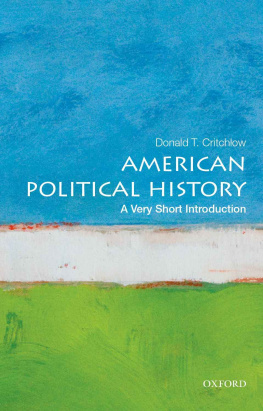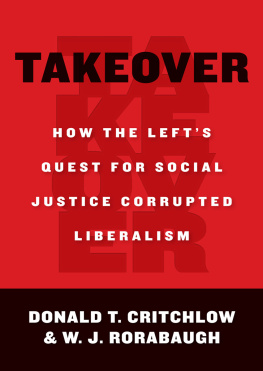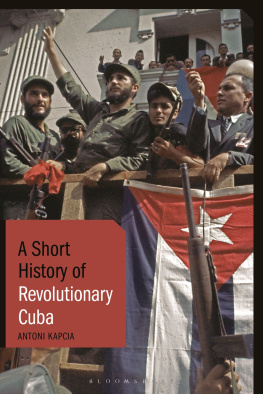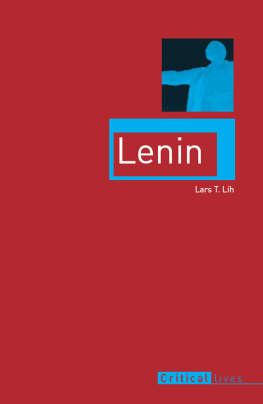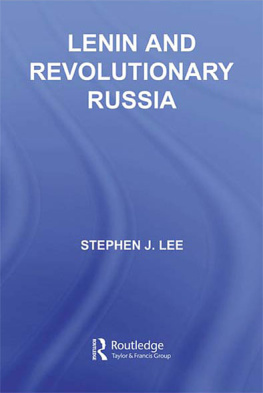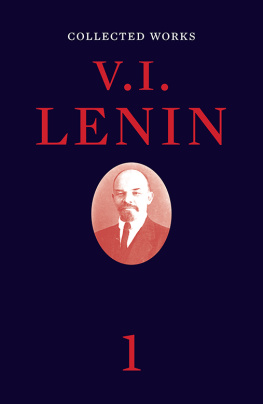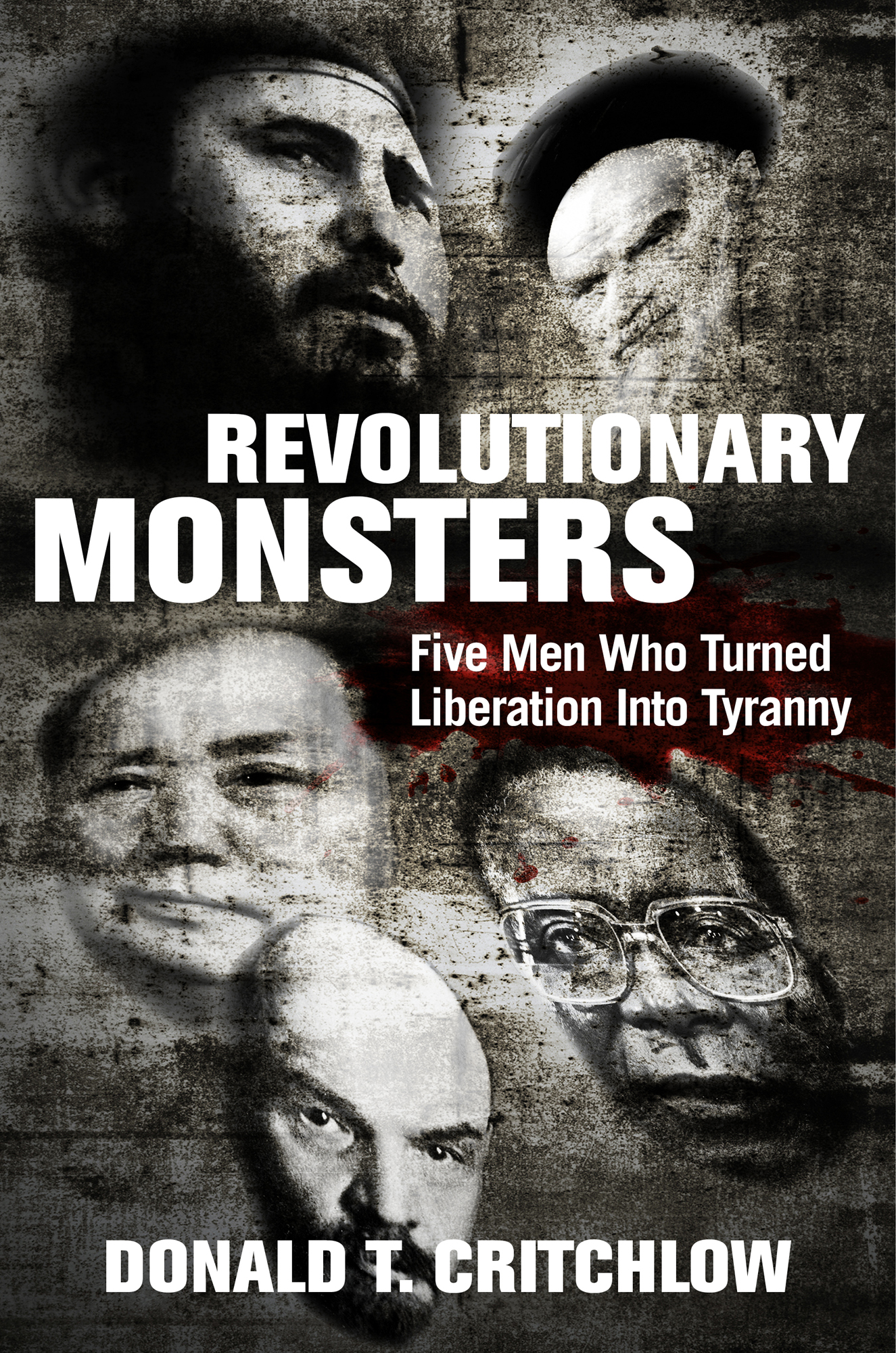Contents
Guide
Revolutionary Monsters
Five Men Who Turned Liberation into Tyranny
Donald T. Critchlow
Copyright 2021 by Donald T. Critchlow
All rights reserved. No part of this publication may be reproduced or transmitted in any form or by any means electronic or mechanical, including photocopy, recording, or any information storage and retrieval system now known or to be invented, without permission in writing from the publisher, except by a reviewer who wishes to quote brief passages in connection with a review written for inclusion in a magazine, newspaper, website, or broadcast.
Regnery History is a trademark of Salem Communications Holding Corporation
Regnery is a registered trademark and its colophon is a trademark of Salem Communications Holding Corporation
Cataloging-in-Publication data on file with the Library of Congress
ISBN: 978-1-68451-124-2
eISBN: 978-1-68451-149-5
Library of Congress Control Number: 2021943476
Published in the United States by
Regnery History
An Imprint of Regnery Publishing
A Division of Salem Media Group
Washington, D.C.
www.Regnery.com
Books are available in quantity for promotional or premium use. For information on discounts and terms, please visit our website: www.RegneryHistory.com.
Cover Design by John Caruso
To William J. Rorabaugh, my friend since graduate school at the University of California, Berkeley.
To Dean Riesen, Dan and Carleen Brophy, and David and Bob Katzingood friends all.
Introduction: The Revolutionary Mind
M any young people today are infatuated with revolution, but for those who fled Communist dictatorships, revolution is a serious matter. People who have experienced the chaos and terror that comes with political upheaval often ask such things as: Why arent young people better informed?; Whats happening in our schools that students are learning this?; or Why arent our youth being taught about the nature of these oppressive regimes?
Revolutionary Monsters provides a warning to those beguiled by the siren call of revolution. The lessons of the tragic revolutions in the twentieth century are all too apparent in the failures of the former Soviet Union, China, Cuba, Zimbabwe, and Iran. A myriad of books can be found on each of these failures. Exceptionally diligent scholars have detailed them. Memoirs by those who suffered under these regimes offer heartbreaking, terrifying accounts of human suffering and the deaths of millions. Revolutionary Monsters also provides a grim account of these failed revolutions. The book asks an apparently simple question: What motivated leaders such as Lenin, Mao, Castro, Mugabe, and Khomeinirevolutionaries who transformed their societiesto create such monstrous, brutal, and oppressive regimes? Each of these men in his own way called for creating the New Man. They were convinced that a new age in historyone of equality and social perfectionwas about to begin with the overthrow of the existing government.
Revolutionary Monsters recounts the tragedy of dictatorship in our age of alleged enlightenment. The book is short, with the intention of being read by those who know little about the human tragedy of history. The assumption behind Revolutionary Monsters is that facts can replace vacuous rhetoric about liberation, equality, and freedom. These words should impart a deeper meaning to those cautious ones who realize the imperfections of the world and human nature, even while understanding that progress, albeit often uneven, should be sought. To speak, though, of imperfections of the world and human nature hardly captures the tragedy of revolution (and war) in the twentieth century. Revolutionary Monsters presents the dialectic of revolution as liberation transformed into oppression, freedom into tyranny, and idealism into tragedy. Individual men and women, not nameless social forces, drive history. With little knowledge of history, the young are easily persuaded by the romance of revolution and the acceptance of destruction as a path to human perfection.
The modern revolutionary mind is enraptured by millennialist visions of a perfected society. Those who succumb the most to revolutionary logic take on a terrorist mentality. These revolutionary monsters assume the roles of prophets acting in a corrupt world that cannot be reformed or bettered gradually; heaven on earth arrives only through destruction of the existing world order. The modern revolutionary believes with fanatical conviction that the old order needs to be destroyed. Violence is necessary to fulfill the prophecy. Terror is an instrument for achieving and maintaining power. This apocalyptic vision, in which the new world order springs out of the old, relegates individuals to treatment as abstract entities that either stand on the side of revolution or on the side of reaction.
In the twentieth century, millions of people have died at the hands of revolutionary monsters who came into power calling for the liberation of people from their oppressors. Mass murder within these revolutionary regimes was not a coincidence. Terror is instrumental to the modern revolutionarymass murder follows without apology. Terror is employed to maintain power within the regime and is used against the revolutionarys internal and external enemies. The Islamic Republic of Iran, for example, executed tens of thousands of alleged enemies of the state and today maintains order through a regime of mass arrests, torture, and imprisonment. Support of international terrorism against the American infidels or Zionist Israel has followed without qualm.
Today, the word revolution connotes upheaval, but its origins begin in modern usage as an astronomical term, employed by the Polish scientist Copernicus, who in the early sixteenth century used the word in its Latin sense to describe a recurring, cyclical movement of planets. The word meant planets revolving back to a preestablished point. In this sense, revolution meant restoration. When the word began as a political term, it too meant restoration. The Glorious Revolution of 1689, which brought William and Mary to the throne in England, was seen as a restoration of ancient liberties. The American Revolution, less than a century later, demanded the restoration of liberties and the universal rights of Englishmen. It was the French Revolution that introduced to the modern world a revolutionary vision in which the old order is destroyed to create a new world, a new millennium for humankind. The modern concept of revolution denoting the destruction of the old order through violence and terror found articulation in the French Revolution.
The French Revolution came in the age of democratic revolutions that followed the American Revolution. Revolutionaries found, however, that the American model was not easily replicated. Those French officers who had fought in the American Revolution had been warned, You will carry our sentiments with you, but if you try to plant them in a country that has been corrupt for centuries, you will encounter obstacles more formidable than ours. Our liberty has been won with blood; yours will have to be shed in torrents before liberty can take root in the old world.
The French Revolution began when King Louis XVI of France convened the Estates General in May 1789 for the first time since 1614. The Estates General represented the clergy, the nobility, and the commoners. In June, the Estates General transformed itself into a National Assembly, which undertook to abolish slavery, placed the Catholic Church under state control, and extended the right to vote. The French Revolution began as a claim to restore the ancient powers of the Estate, but under the threat of counterrevolution, social unrest, and war with Austria, Britain, and Prussia, a Reign of Terror began in 1793 with the establishment of the Committee of Public Safety, headed by Maximilien Robespierre and his Jacobin faction. Under Robespierre, a wave of violence was unleashed to root out alleged counterrevolutionaries.


